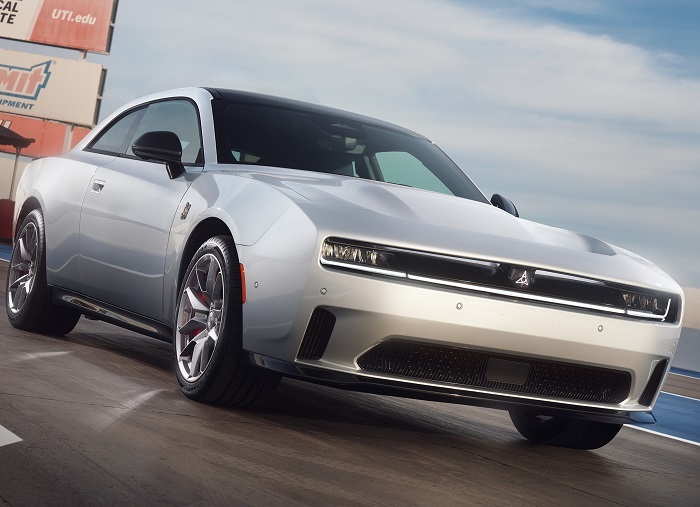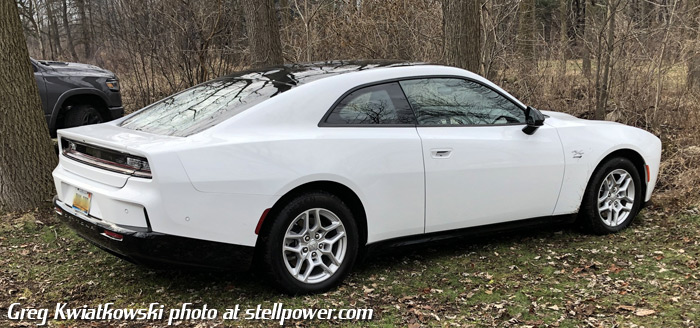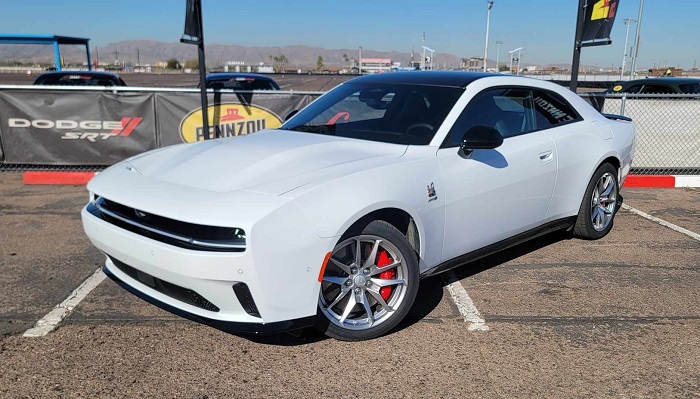After riding shotgun in the new 2024 Dodge Charger Daytona Scat Pack Stage 2 yesterday, I wanted to shared my thoughts on the brief experience and my overall thoughts and feelings as an enthusiast and a current Charger owner.

I’ve been around Mopar for the better part of the last 20 years, so I’ve experienced many different facets of Mopar performance. I’ve owned two seventh-gen Chargers, both powered by the 3.6L V6; driven a handful of SRT4s, the late-’90s Durango and Dakota R/T 5.9L, and various Chargers and Challengers with the 5.7 Hemi V8, the SRT8 6.1L, and the 392 Hemi V8. I’ve had experiences with Hellcats including Challengers, Chargers, Durangos, Jeep Grand Cherokees, and the TRX pickup truck. So I’ve definitely been around most of the Mopar V8 muscle cars from the past two decades, along with the other Mopar performance cars. What I say now is informed by all this.

This is not a Tesla competitor. I need everyone to understand this. I’ve been in Teslas (mostly model 3, both dual and single motor) and it does not compete in that category. Let’s get that out of the way right now. The Tesla shoves its computers into your focus, has few physical controls, and is meant to put technology forward. The Charger is designed to offer the same kind of experience you would get in a Hellcat or 392, because it is that kind of car. It’s the kind of car that offers an engaging experience for all the senses, in other words, it’s fun!
Let’s start off by saying that this car, the new Charger, has the exterior proportions of a muscle car, comparable to the recent Charger widebody. It’s wide and it has a Coke-bottle shape that is proportioned very well. The design team did a good job with the car, even if the front end takes way more inspiration from the Challenger than the actual Charger; but it has the muscle car look down perfectly.

Most of the body lines of the ’68-70 Charger are there and from different angles, you can really see just how much the second generation Charger influenced this car. The hood beyond the R-Wing looks amazing and the way it is sculpted is truly a work of art.
The inside is like nothing I’ve ever experience on a Mopar before. Design wise, the styling is on par with an AMG and the material quality is better than anything I’ve ever sat in that was a Mopar vehicle. The inside of this car is solidly in the realm of a premium vehicle more aligned with vehicles somewhere between a Genesis G70 and an Audi as far as quality feel. The two door car has enough back seat room for adults under six feet tall, as long as the people up front are also under six feet tall, so it’s definitely better than any Mustang, Camaro, or Challenger that came before it.
The car also has enough cargo space to be useful and while certain shapes in the cargo area are reminiscent of the original 1966-67 Charger, it more reminds me of my old F-body but bigger and way more useful. There is nothing in here that will remind anyone of the 2005-23 Charger or Challenger when it comes to the overall feeling, and that isn’t a bad thing. The layout has a slight Challenger style but that’s about it.

The real experience of this car is when the car is alive. This car is loud and, yes, it is comparable to a stock Charger 392 or Hellcat in sheer volume—by design. It has a deep note from the Fraztonic sound system that pulses like a V8, with a blended sound that is reminiscent of the Dodge Turbo Interceptor M4S (similar to The Wraith movie car from the 1980s). Yes, you can hear it for about a block or so away, and it doesn’t sound as synthetic as one might think when the car is moving away from you in traffic. It just sounds like a car.
That being said, it has a clear performance tone just like any quality performance exhaust system would have. It’s not a V8, but it’s closer to a V8 type sound than anything else. Moving inside the car, you can feel that the car is on and between the sound and the haptic feedback throughout the car, once you stop thinking about it, you may actually forget for a moment you’re in an electric car.
The big coupe is smooth and tight on regular streets and just feels like a regular car, albeit one with a single gear. If this car had that 3-speed gearbox with the E-Rupt system, you would never know this was an EV. The sound, the feel, and everything else hides the EV aspect of it, including the weight. The acceleration feels nearly identical to the pull of a 717 hp Challenger Hellcat, but more controllable. There’s a small amount of drama from the tires, which gives it that organic feeling; that along with the sound is what makes this an electric muscle car—yes, I will call it that, because that’s what it is. The team did an amazing job on every aspect of this car. It makes me sad that the two biggest reasons that this car might sell poorly is because of the perception that people have because it is an EV and the ridiculous price tag.
The experience excites me about the future of Dodge. The feel, despite the immense weight, makes me that much more interested in the Six Pack versions, which should be much lighter. If the new Hurricanes live up to what reviewers claim, the Charger will continue to be the most powerful of the “affordable” American performance cars.
With its comfort, performance, and all wheel drive option (standard on EV), the Charger should be the best American performance car on the market hands down. If Direct Connection and the aftermarket make upgrades, this car is going to sell just as well as the previous cars did, but with better performance. Personally, I would want a black six pack H/O 4-door AWD version with a Track Pack, but that’s just me.
Discover more from Stellpower - that Mopar news site
Subscribe to get the latest posts sent to your email.
